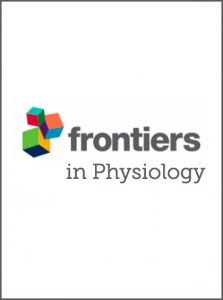Publications

Influence of contrast compression therapy and water immersion contrast therapy on biomechanical parameters of the forearm muscles in martial arts athletes
Authors: Robert Trybulski 1, 2, Jaroslaw Muracki 3, Robert Roczniok 4, Waclaw Kuczmik 5, Nicola Lovecchio 6, Adrian Kuzdzal 7
Affiliations:
- Medical Department, Wojciech Korfanty Upper Silesian Academy, Katowice, Poland
- Provita Medical Center, Zory, Poland
- Institute of Physical Culture Sciences, Department of Physical Culture and Health, University of Szczecin, Szczecin, Poland
- Institute of Sport Science, Jerzy Kukuczka Academy of Physical Education in Katowice, Katowice, Poland
- Department of General Surgery, Vascular Surgery, Angiology and Phlebology, Medical University of Silesia, Katowice, Poland
- Department of Human and Social Sciences, University of Bergamo, Bergamo, Italy
- Institute of Health Sciences, College of Medical Sciences, University of Rzeszow, Rzeszow, Poland
Journal: Frontiers in Physiology - April 2025, Volume 16, Article no. 1494762 (DOI: 10.3389/fphys.2025.1494762)
-
Field & Applications:
- Sport
- Treatment evaluation
- Warm-up / Recovery
Objective: This study compared the immediate effects of game-ready contrast therapy (GRT) and contrast water immersion therapy (CWT) on stiffness, muscle tone, flexibility, pressure pain threshold, and isometric muscle strength.
Design: Experimental, single-blind, randomized controlled trial. Thirty volunteers training MMA (age: 28.20 ± 7.57 years, BMI: 26.35 ± 4.06, training experience: 10.37 ± 7.34) were randomized to two groups: experimental (n = 15) and control (n = 15). In the first phase, the experimental group underwent GRT and the control–game-ready sham therapy (GRS). After a 2-week break, the experimental group underwent CWT and the control–contrast water sham therapy (CWS). The main outcome measures were muscle tone (T) stiffness (S) elasticity (E), pressure pain threshold (PPT), and maximum isometric strength (Fmax) assessed before therapy (Rest) and 5-min and 1-h after treatment (PostTh5min and PostTh1h).
Results: Analysis of variance results for T, S, E, PPT, and Fmax showed statistically significant differences (p < 0.0001) for main effects and interactions. For both therapies GRT and CWT: T, S, and E were lower 5 min after therapy and 1 h after therapy compared to Rest (interaction effect, p < 0.00001). For both therapies GRT and CWT the PPT and Fmax were higher 5min and 1 h after therapy compared to Rest (interaction effect, p < 0.0001). The post hoc test showed statistically significant differences (p < 0.0001) for T, S, E, PPT, and Fmax in the experimental groups (GRT and CWT) for Rest-PostTh5min and Rest-Post1h. No statistically significant differences were found for Post5mi-Post1h. The effect size of Cohen’s d for S, E, PPT, and Fmax showed similar values, with only T being significantly more pronounced in the GRT group (large, d > 0.8). There were no statistically significant differences (p > 0.05) in the control groups (GRT for GRS and CWT for CWS) in the Rest-PostTh5min-PostTh1h range.
Conclusion: The positive impact of both contrast therapy strategies as a stimulus influencing important aspects of biomechanics was confirmed. The results showed similar effects of CWT and GRT (both similarly lowering S and E and increasing Fmax and PPT) except for the analysis of muscle tone, where the lowering effect of GRT had larger effect. These findings can be directly applied by researchers, sports medicine specialists, and martial arts trainers interested in the biomechanical effects of therapy on athletes, improving their understanding and practice.
Keywords: regeneration, readiness to play, MMA fighters, water immersion, contrast therapy, myotonometry, pressure pain threshold
In summary, this study suggests a positive effect of both contrast therapy strategies as a stimulus influencing important aspects of muscle biomechanics, pain threshold and muscle strength. The results suggest similar outcomes of CWT and GRT, except for the analysis of muscle tone, in which the impact of GRT was statistically more significant. Considering the observed changes of the muscles’ biomechanical parameters measured with myotonometry we confirm the potential of both CWT and GRT to enhance the recovery process. It should be remembered that water therapy has advantages related to availability and low cost in the case of amateur sports, which may be an advantage in some conditions. Despite challenges related to group size and diversity, our findings suggest opportunities for further research into contrast therapy and improved recovery strategies in sports.


